One minute review
Miele has been a trusted home appliance brand for many years now, and its vacuum cleaners regularly feature in our best vacuum cleaner round-ups. The Miele CX1 Boost PowerLine is the entry-level model in the German brand’s new CX Boost line which comprises three compact, bagless cylinder vacuum cleaners, and is priced at £269 .
Miele says the CX1 Boost PowerLine has a footprint the size of an open magazine which is one which we can vouch for when the vac is being stored. It packs an efficient 890W motor, multistage filtration system, and TrackDrive technology to ensure that it remains consistently powerful while capturing even the smallest particles of dust and dirt. It offers four suction levels, and two floor head settings which can be easily switched between using either your foot or hand.
It’s a corded vacuum, so gives you more power than some cordless models of a similar size, although this does mean that you’re tied to a plug, which limits your manoeuvrability somewhat; its 6.5-metre length will be enough for cleaning smaller areas, but we found that we needed to unplug it at least once to vacuum our 45 square metre ground floor. There’s plenty of cord for cleaning stairs, though – which is a good thing as its rounded design and large wheels suggest it could be prone to toppling off shallower stair treads.
Its compact design means the Boost CX1 PowerLine is easy to store if space is at a premium, and is also an asset when manoeuvring the cleaner in tight spaces and around furniture. We particularly like that the three supplied tools can be securely stowed on the handle of the vacuum, making them easy to access when needed.
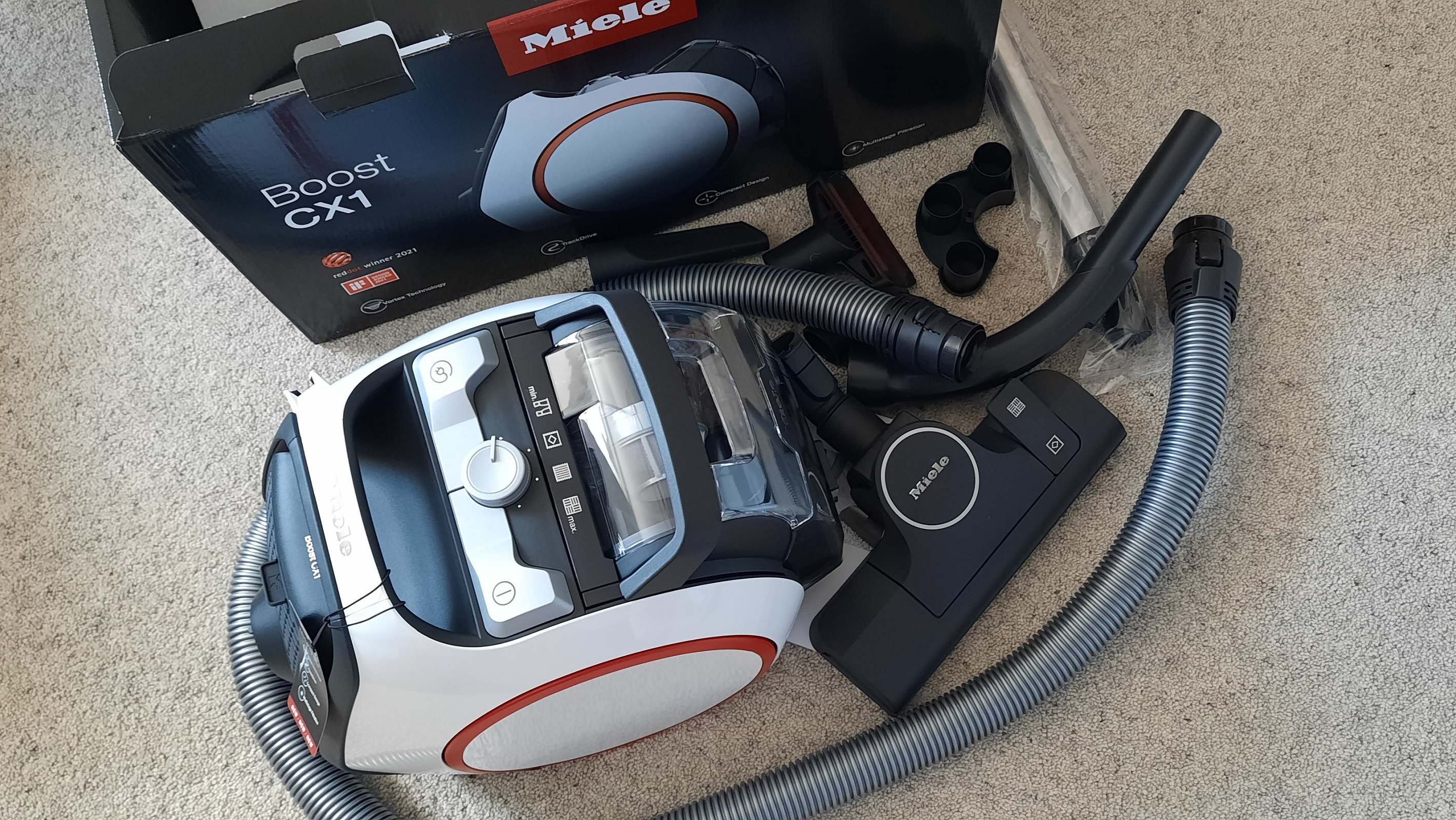
Miele CX1 Boost Powerline: price and availability
- List price £269
- Available direct from Miele and from major retailers
The Miele Boost CX1 PowerLine costs £269, and is available direct from Miele as well as from retailers including John Lewis and Amazon.
- Price and availability score: 5/5
Design
- Corded design
- Compact build
- Powerful yet agile
If having a power cord isn’t a deal-breaker for you when choosing a vacuum cleaner, you’ll be pleased to know that the cord is a relatively generous 6.5 metres in length, unwinds easily, and retracts with the press of the foot (or hand) pedal. You may find that this is plenty long enough for the floor area which you need to vacuum but we found that we needed to unplug it at least once to vacuum our 495ft2 / 45m2 ground floor level which wasn’t a problem for us, just a consideration if you have a larger home and don’t want to be returning to the wall socket frequently.
The cord wasn’t a limiting factor when using the Miele Boost CX1 PowerLine to clean our stair carpet, but the overall design was. The cleaner features Miele’s TrackDrive technology, with extra-large wheels on its sides and additional small swivel castors to enable the unit to turn 360 degrees on its axis for staying on track. Ours is an older home, and the stairs are narrow with shallow treads, and we found that while the vacuum would just about sit securely on a step, the slightest tug on the hose would send it toppling off.
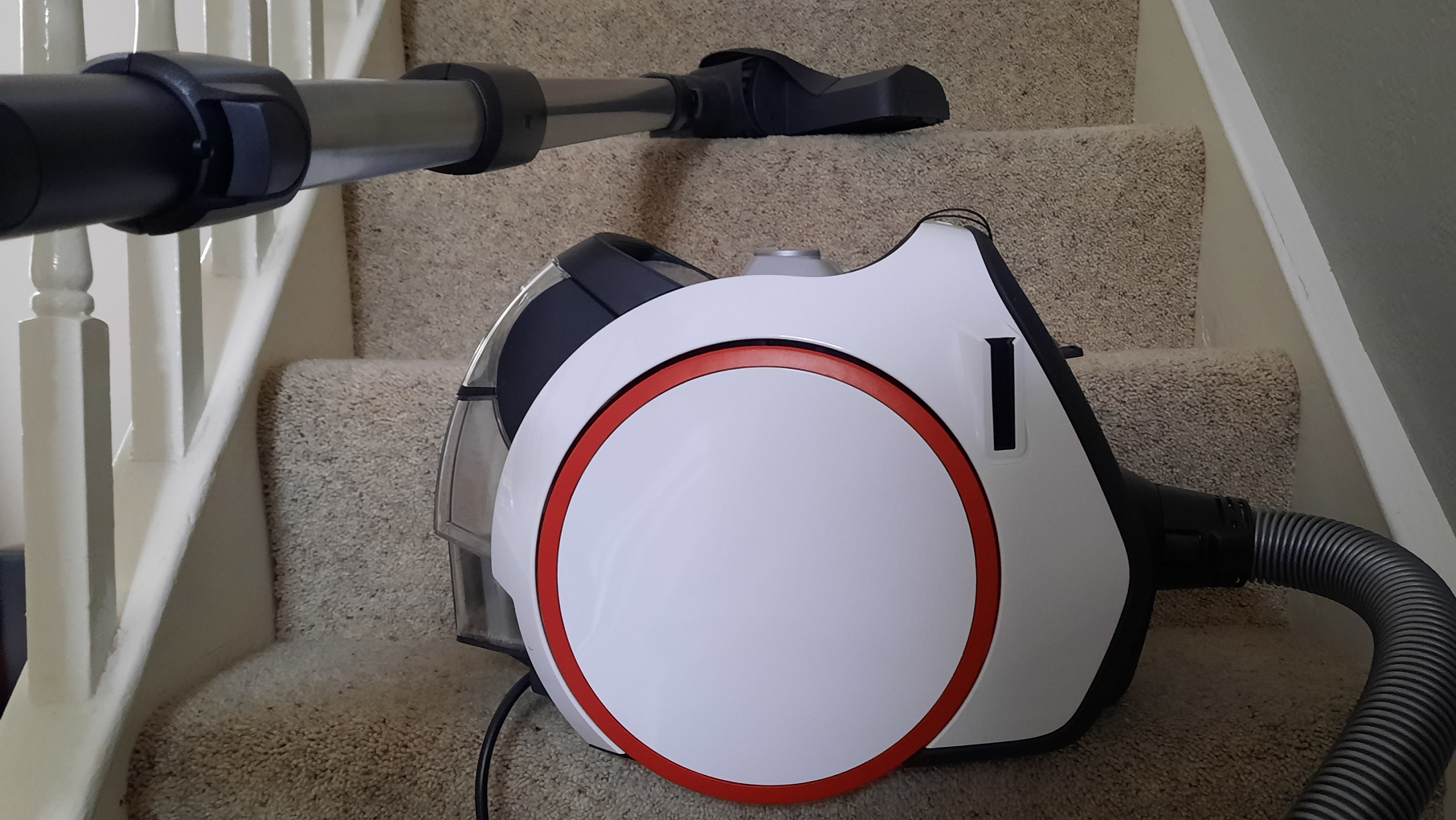
Packed into a footprint smaller than an open magazine this model in the Miele CX1 lineup has a multistage filtration system. It’ll retain even the smallest particles, which should provide some relief to any allergy sufferers, like me, and works in tandem with Miele’s Vortex technology to capture both coarse and fine dust particles.
Performance
- Universal floor head
- Three accessories
- Four suction levels
The Miele Boost CX1 PowerLine did a good job of collecting fluff, crumbs and debris from both hard floors and carpets, even in tricky, hard-to-reach places.
On carpet, it pulled up any loose fluff in just one forward-and-back sweep. It also effectively sucked up dust, which while hard to see, was obviously evident as it gradually filled up the bin. It performed equally well on a hard floor, with dust, cereal and other debris being swiftly picked up by the universal floor head.
There are four suction settings to choose from – upholstery, hard floor, rugs and carpet. These can be changed by turning the dial on the main vacuum cleaner body, and each setting felt appropriately powerful for the intended surface – we did a quick test to see how the carpet suction level worked on a rug, and the suction was so strong that it lifted the rug off the floor.
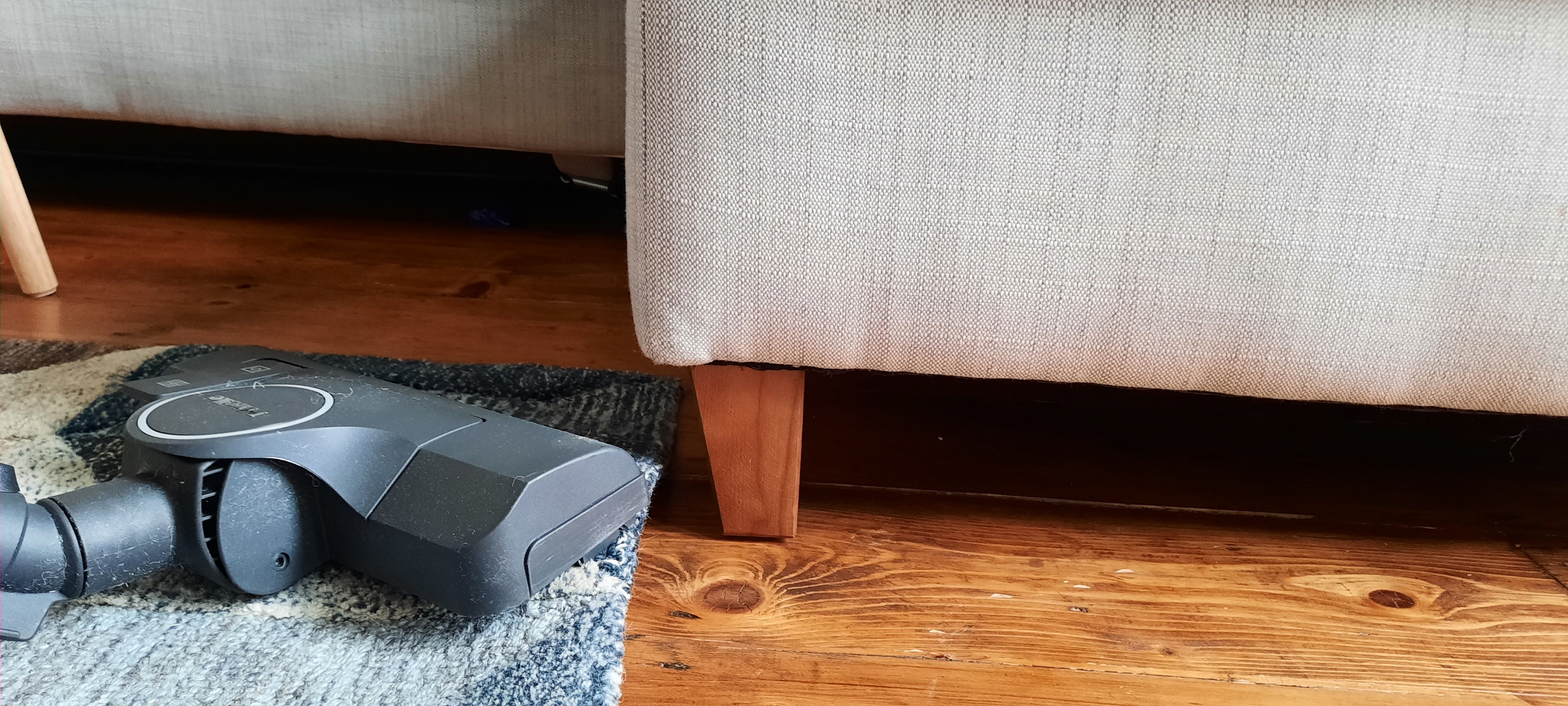
Generally speaking, the Boost CX1 PowerLine is easy to manoeuvre around tight spots in the home, such as through doorways and around corners. At 12.8lbs / 5.8kg it’s lightweight, and its compact size makes it easy to move around, although the cord length made it tricky to reach every corner of larger rooms. It’s not too much of a challenge to carry it between rooms and up and downstairs, but we did keep mistaking the catch on the bin for the actual handle which meant that instead of lifting the vacuum cleaner, we lifted the bin up instead.
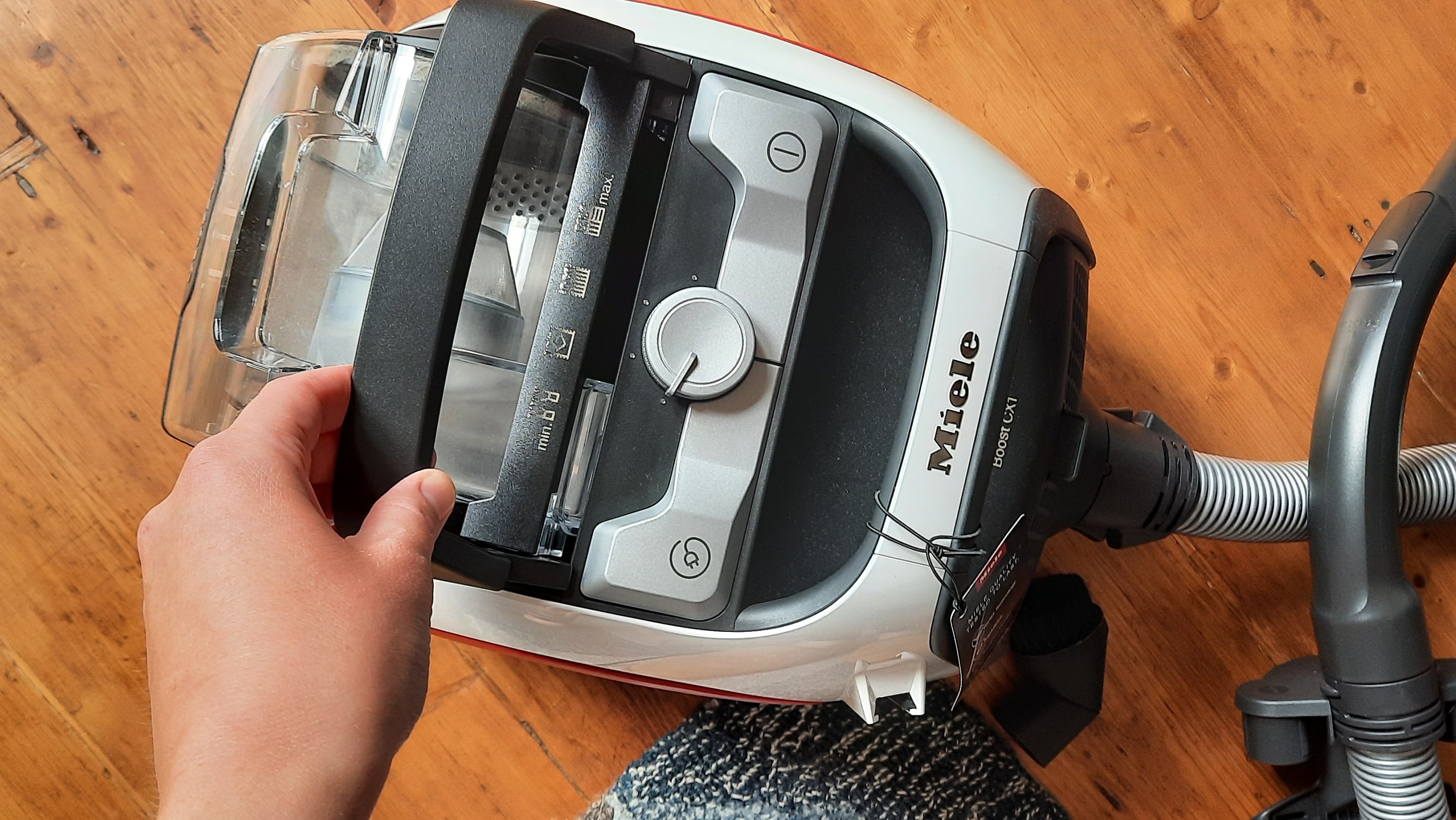
The dusting brush and crevice tools enable you to clean harder-to-reach areas like around a fireplace, and behind radiators. We also used the upholstery nozzle on some rogue crumbs residing on the sofa, but we found it easier to these off and onto the floor and pick them up with the floor head – this attachment isn’t best suited to our household, but perhaps it will be with pet owners. We found it easy to switch between accessories, as they’re all accessible when stowed on the handle. We found the vacuum to be quiet in operation compared to some other corded models.
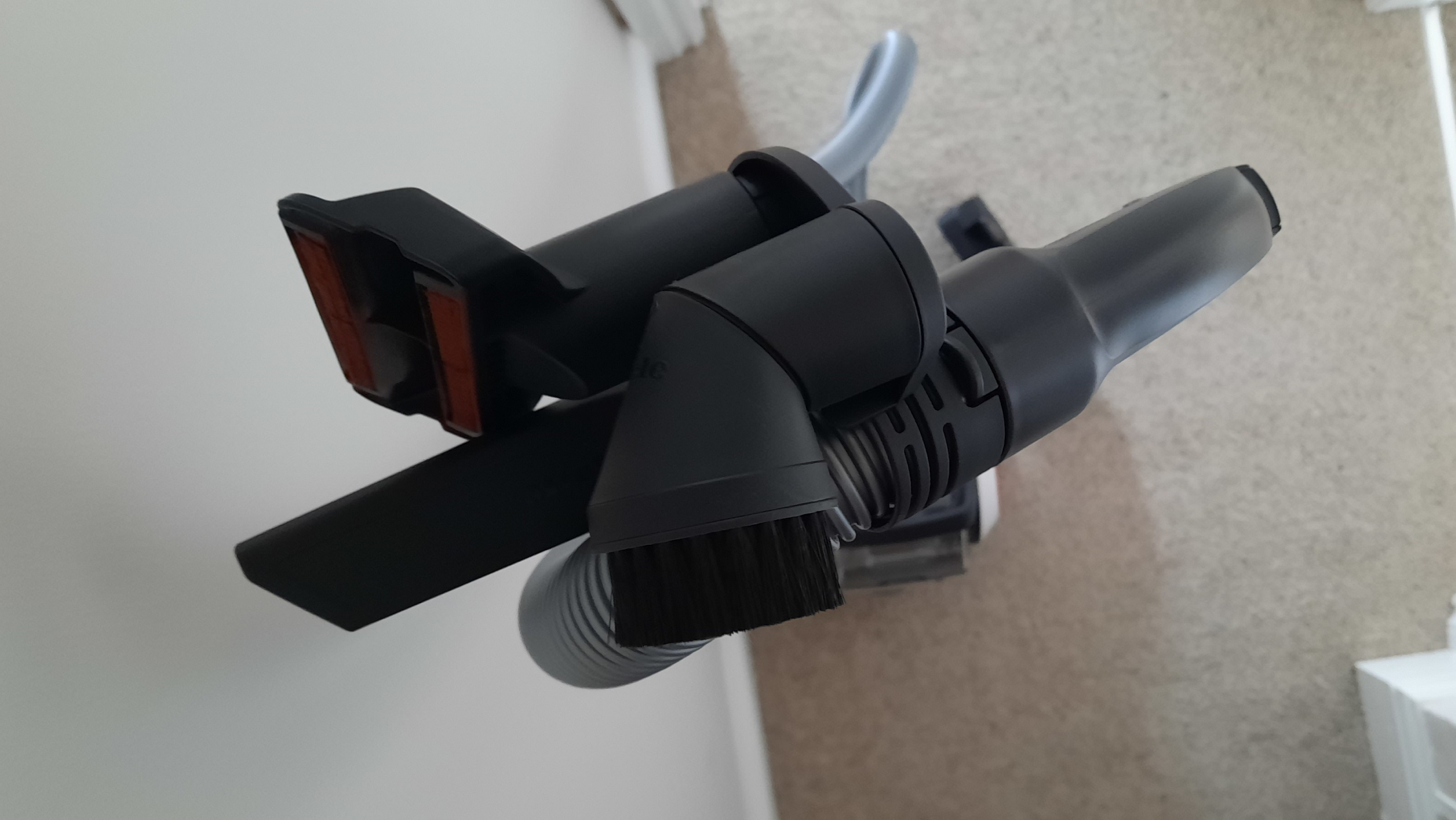
Although we weren’t able to measure the noise level due to technical issues, it was noticeably quieter to our ear. Miele pegs the noise output at 78dB which is in line with typical vacuum cleaner noise levels, with anything above 80dB approaching the noise level of a food blender. The floor head is not motorized, so the only sound you’ll hear is from the motor.
Cleaning, maintenance and storage
- Bin is easy to empty
- Mini brush is supplied for cleaning the filters
- Vario-clip keeps all three accessories secure onboard
Emptying the Miele Boost CX1 PowerLine’s dust canister is something which you’ll be needing / wanting to do regularly. The dust canister has a catch which we mistook for the carry handle a few times. The dust container release catch is on the front of the bin, and there are various other release catches that enable you to access the filter frame, pre-filter and fine dust filter with filter mat, all of which can be cleaned with a shake and a brush with the supplied mini brush, and rinsed under cold running water.
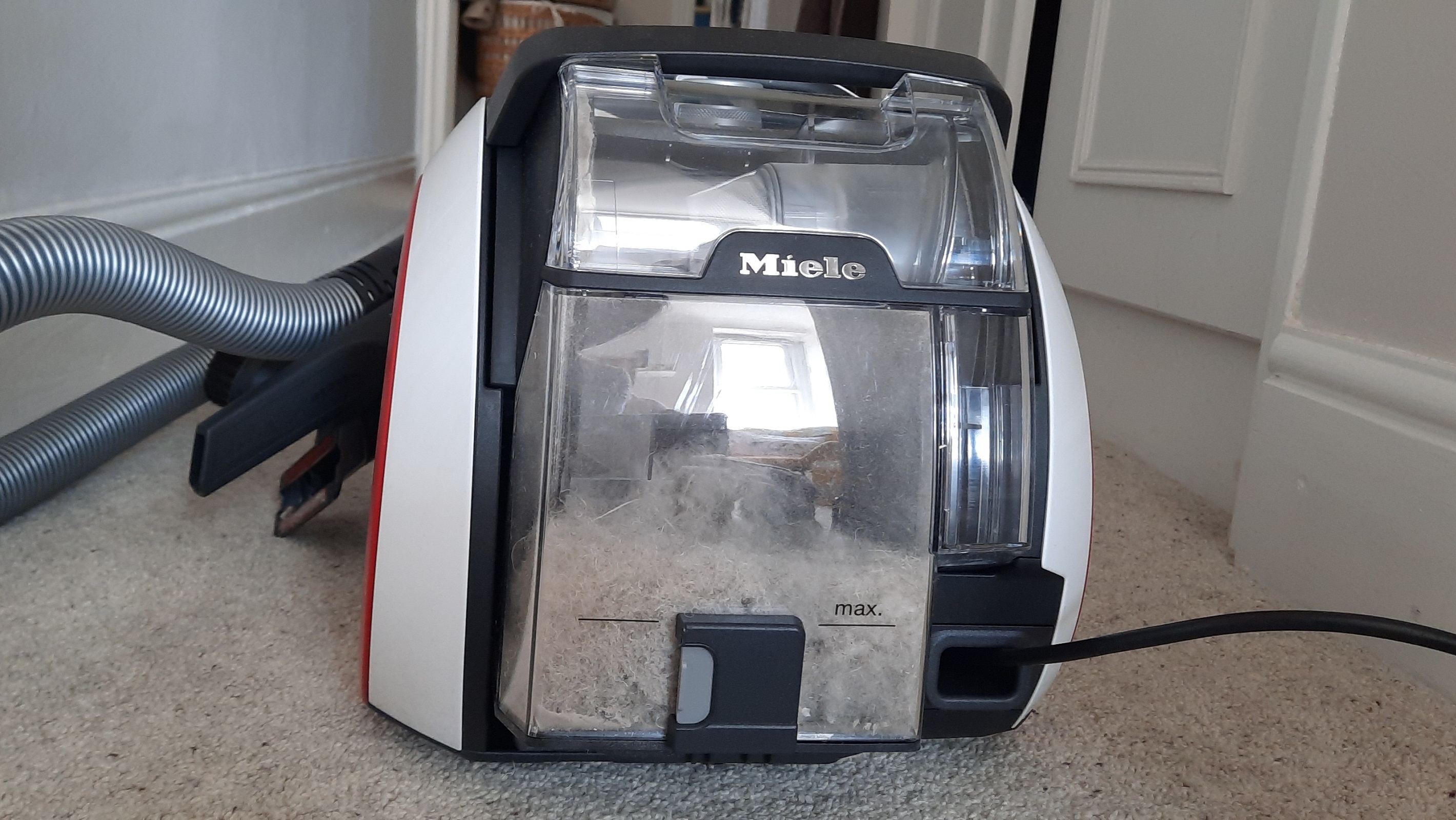
As for longer-term maintenance, Miele recommends that you replace the Hygiene AirClean and HEPA AirClean filters once a year, and replace the fine dust filter every three years.
The Miele Boost CX1 PowerLine doesn’t take up much room when stored, which makes it perfect if space in your home is at a premium. The comfort telescopic tube slides onto the ‘park system’ which although does make the stationed vacuum cleaner tall, it doesn’t make it any wider.
On the handle is one of the vacuum cleaner’s most useful features – the on-board storage clip for the tools, which Miele calls the Vario-Clip. This ensures that the crevice, dust and upholstery tools are always there when you need them, although if you’re cleaning underneath the bed or couch with the tube low down they may scrape along the floor a little as you clean.
- Cleaning, maintenance and storage score: 4.5/5
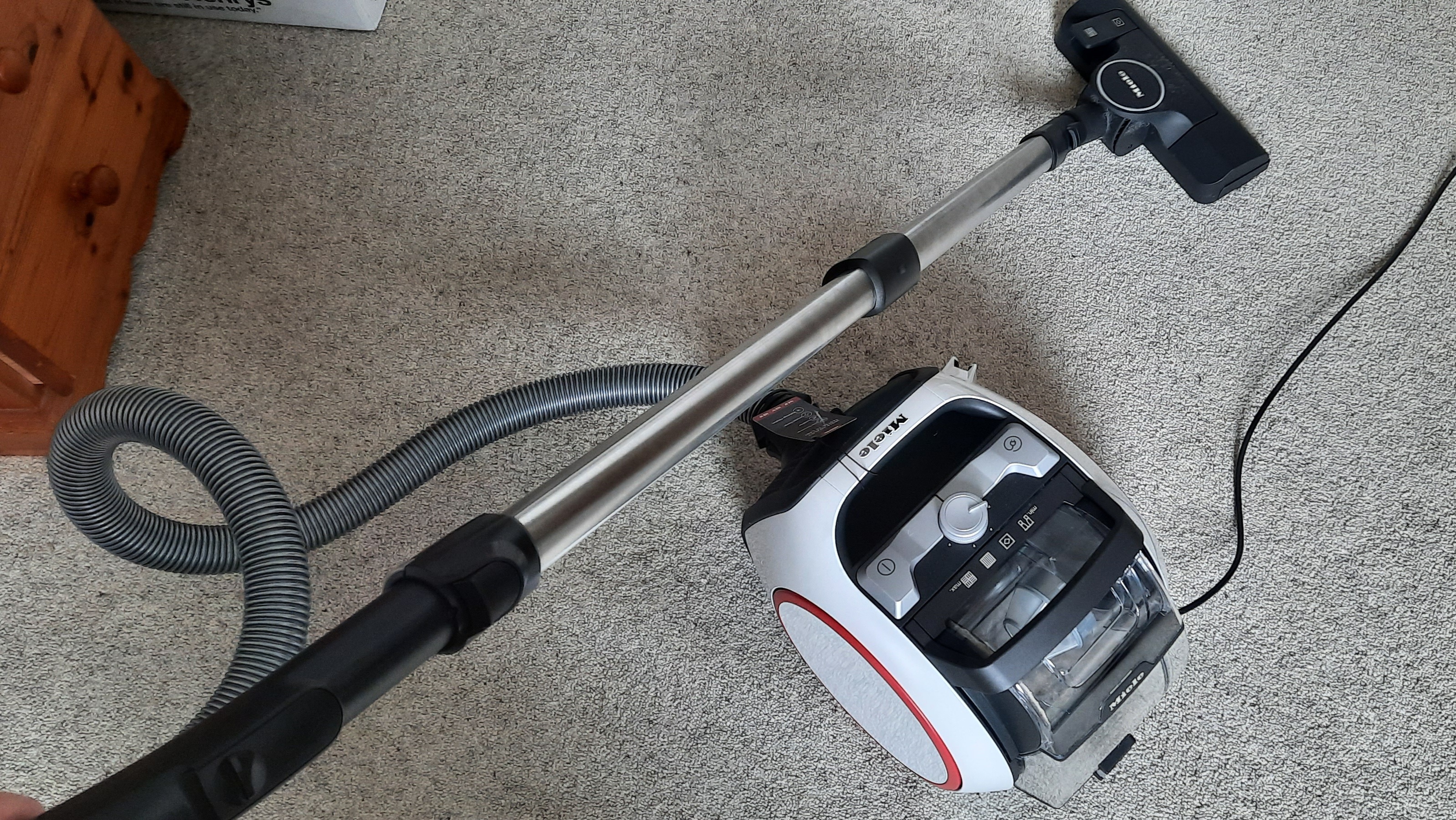
| Attributes | Notes | Rating |
|---|---|---|
| Price & affordability | This is one of the most affordable vacuum cleaners from Miele we have seen, and you know it’ll be quality | 5/5 |
| Design | It’s a very compact design which is packed with features such as Miele’s TrackDrive and Vortex tech to make it easier to use. We really like the accessory storage, but we weren’t too keen on the cord or how unsteady is was on our steep stairs | 4/5 |
| Performance | The universal floor head and four suction levels can’t be faulted, yet the length of cord became restrictive | 4.5/5 |
| Cleaning, maintenance and storage | Doesn’t take up much space to store or clean, but the filters will need replacing once a year | 4.5/5 |
Buy it if…
Don’t buy it if…
- First reviewed: June 2022




